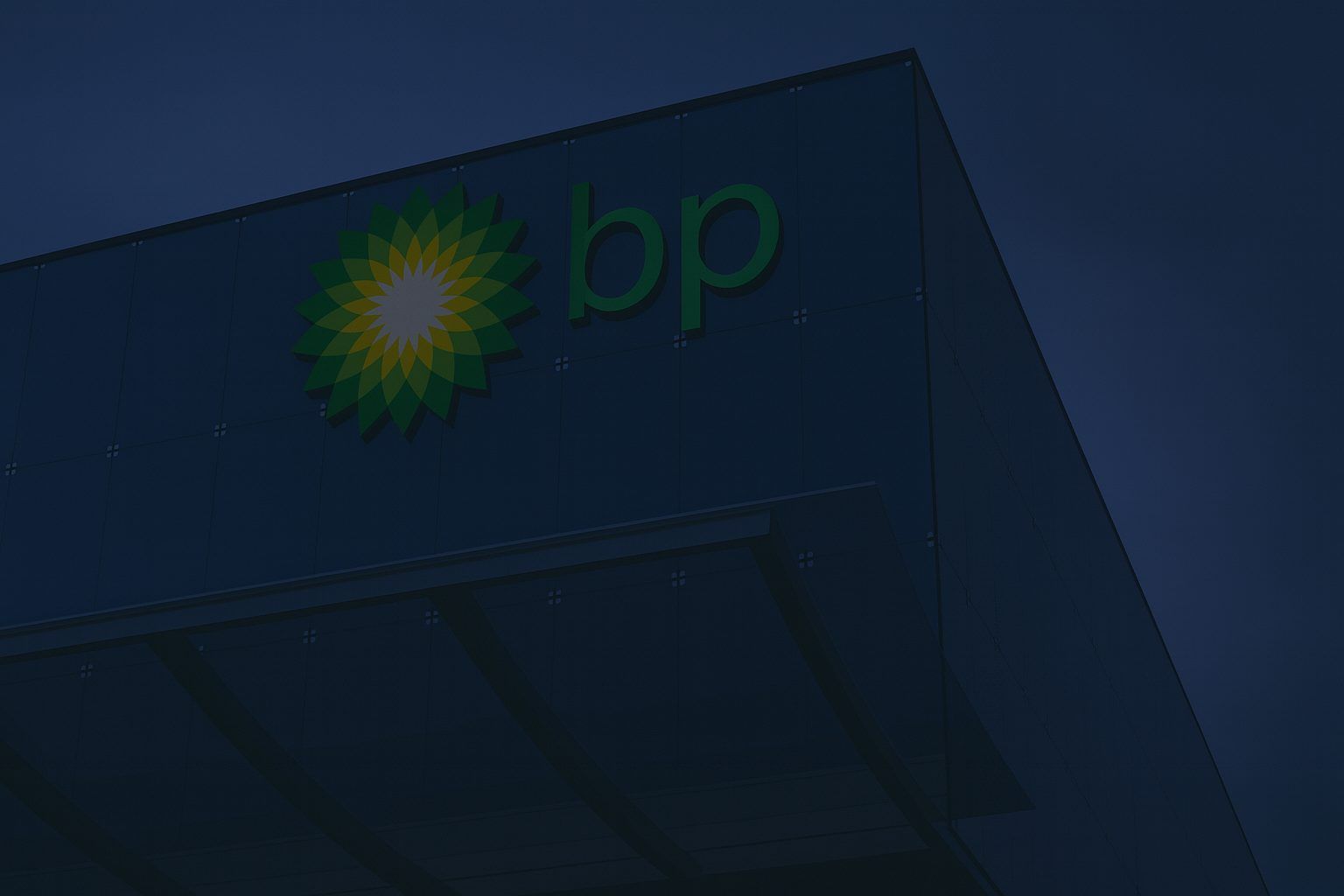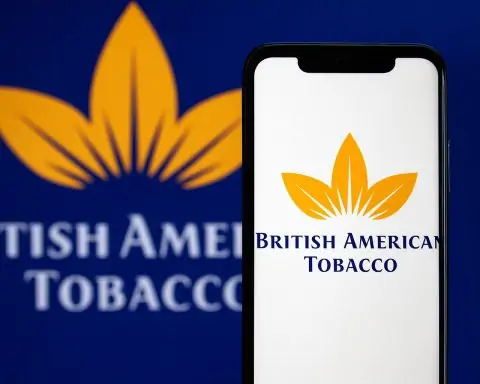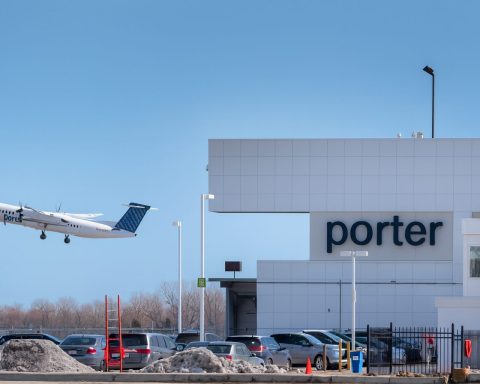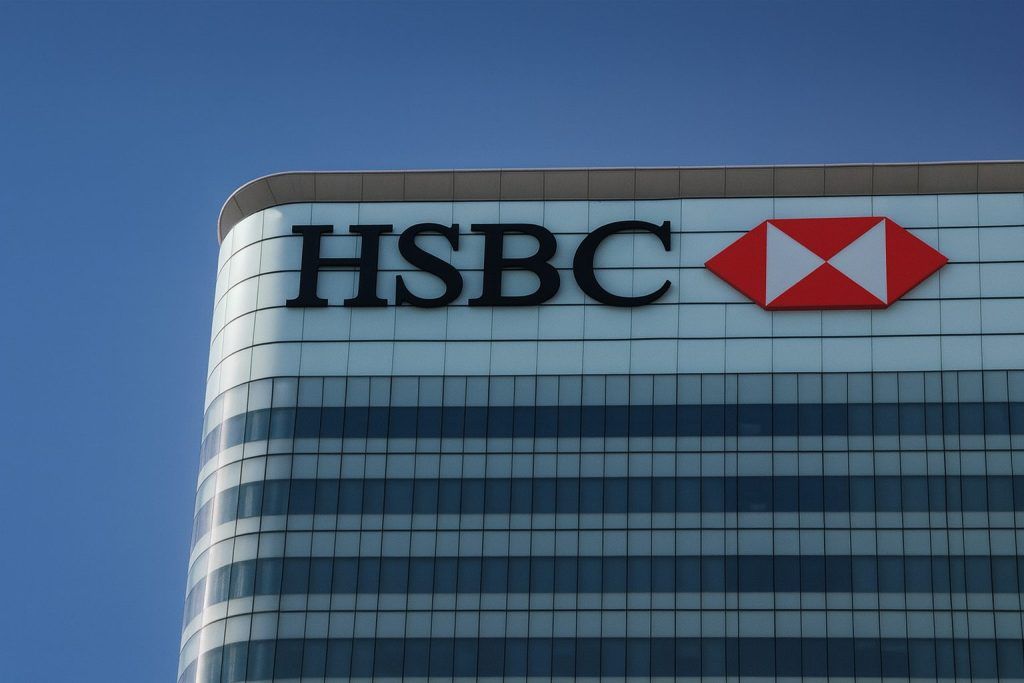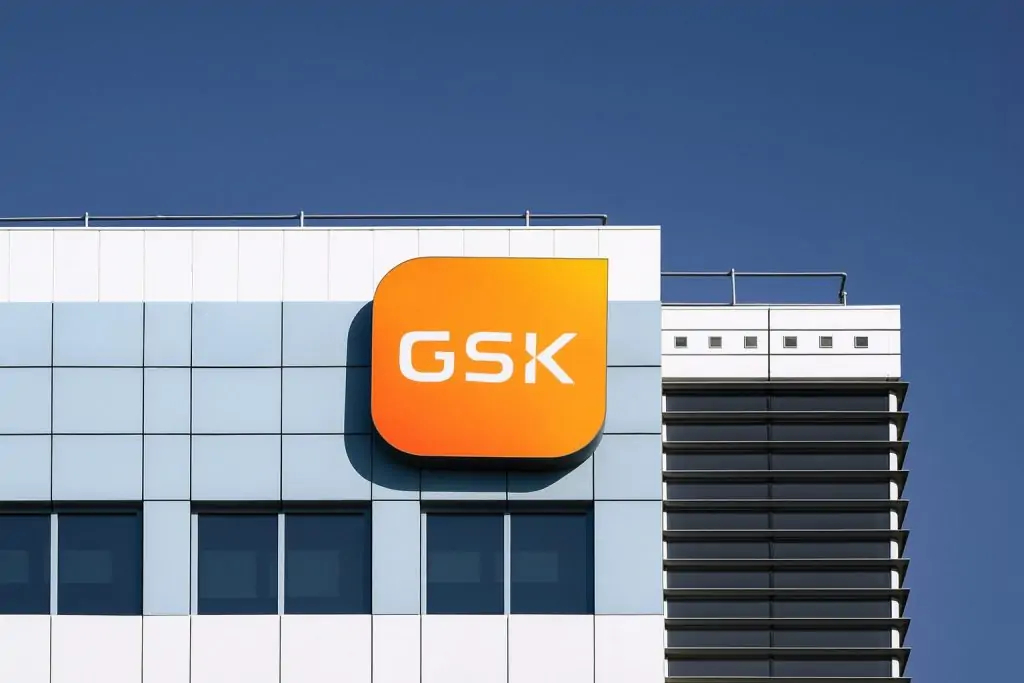BP PLC stock finished Friday’s session in London slightly higher as investors weighed steady oil prices, continued share buybacks and fresh speculation about a potential sale of the Castrol lubricants business to Saudi Aramco.
BP share price today: a small rebound after Thursday’s drop
On the London Stock Exchange, BP PLC (ticker: BP.) closed around 451p on 28 November 2025, up just under 1% on the day. End‑of‑day data from Investing.com shows a close of 451.30p, after trading between 448.3p and 451.5p, with volume a little under 0.9 million shares. [1]
Hargreaves Lansdown quotes a similar picture, with a closing bid–offer of 450.80p / 450.85p, a daily gain of about 3.8p (0.85%), and a market capitalisation of roughly £69 billion. [2]
Friday’s move partly reverses Thursday’s slide, when BP fell around 1.3% to 447p, leaving the stock roughly 5% below its 52‑week high near 476p reached on 11 November. [3]
Performance metrics from HL underline how far the share has come since last year’s lows:
- 1 week: +2.45%
- 1 month: +2.52%
- 6 months: +24.15%
- 1 year: +16.36%
- 5 years: +70.03% [4]
On Wall Street, BP’s NYSE‑listed ADR (ticker: BP) most recently closed at about $35.9 on 26 November, not far below its all‑time closing high of $36.84 set on 11 November. The 52‑week range stands at $25.22–$37.64, with BP up roughly 22–23% over the past year. [5]
Latest company news: aggressive buybacks and pipeline repairs
Daily share buybacks continue
Official filings show BP is leaning hard on share repurchases to support earnings per share and its share price.
A Regulatory News Service (RNS) announcement dated 27 November 2025, published today on Investegate and via Reuters, confirms that BP bought back 1,600,015 ordinary shares on Thursday as part of the buyback programme launched on 4 November. The purchases were split across the London Stock Exchange and Cboe (UK) venues at a volume‑weighted average price around 448p per share. [6]
After this latest tranche, BP reports holding about 835.6 million shares in treasury, with 15.65 billion ordinary shares in issue (excluding treasury) plus roughly 12.7 million preference shares. [7]
These daily buybacks form part of a $750 million repurchase programme that BP announced alongside its third‑quarter results, scheduled to run until 6 February 2026 under authority granted at the 2025 AGM. [8]
Olympic Pipeline leak: from shutdown to repair
Operationally, BP is still dealing with the fallout from an Olympic Pipeline leak in Washington State, which has affected jet‑fuel supplies to key Pacific Northwest airports.
- A recent MarketScreener report notes that the pipeline shutdown has forced airlines to seek alternative fuel supplies, tightening regional markets. [9]
- A follow‑up piece states BP has now identified the source of the leak after roughly two weeks, an important step toward a full restart of the system. [10]
Specialist market site TS2.tech links this disruption to recent weakness in BP’s share price, highlighting that the pipeline outage and softer oil prices weighed on BP.L around 21 November, even as the company continued buybacks. TechStock² A newer TS2 article on 27 November frames BP’s share action in terms of the pipeline leak, the restart of BP’s Whiting refinery in Indiana and progress on large “mega‑projects”, again underlining how short‑term operational issues and long‑term growth projects are colliding in the valuation. TechStock²+1
Q3 2025 earnings: profit rebound and cash‑flow power
Much of today’s narrative around BP stock still hinges on its third‑quarter 2025 results, released on 4 November.
Key points drawn from TradingView, TipRanks and other earnings coverage:
- Underlying replacement cost profit – BP’s preferred earnings measure – came in around $2.21 billion, beating consensus estimates near $2.02 billion and only slightly below the $2.27 billion reported a year earlier. [11]
- Reported profit attributable to shareholders jumped to about $1.51 billion, up sharply from $370 million in Q3 2024, reflecting improved operations and fewer one‑off charges. [12]
- For the first nine months of 2025, profit for shareholders rose to roughly $3.48 billion versus $2.34 billion in the same period of 2024. [13]
- BP reported operating cash flow of about $7.8 billion in Q3, helped by better upstream reliability and stronger downstream margins. [14]
- Earnings per share of around $0.85 beat forecasts closer to $0.77, a positive surprise of roughly 10%. [15]
Despite this, the stock actually dipped on the day of the release, as some investors took profits after a strong run and focused on volatile commodity prices. [16]
Strategic moves: Castrol sale talk and Saudi Aramco interest
One of the more intriguing angles for BP shareholders today is the evolving story around Castrol, BP’s long‑held lubricants arm.
Back in May, GuruFocus reported that BP had formally kicked off a sale process for Castrol, working with Goldman Sachs and targeting a price tag in the region of $8–10 billion as part of its plan to raise around $20 billion from asset disposals by 2027. [17]
Now, on 28 November 2025, Russian newswire AK&M reports that Saudi Aramco is considering acquiring Castrol assets from BP, citing a press comment related to their lubricants cooperation. [18]
Details are sparse and no formal transaction terms have been announced, but if Aramco emerges as a serious bidder, a Castrol deal could:
- crystallise a multi‑billion‑dollar cash inflow for BP,
- simplify the portfolio further toward upstream, refining and convenience/EV charging, and
- potentially support higher buybacks or debt reduction.
For now, this remains deal talk, not a signed agreement, but it gives extra context to BP’s multi‑year strategy of recycling capital out of non‑core assets and into higher‑return projects. [19]
Growth projects and free‑cash‑flow ambitions
A recent Zacks‑authored analysis (syndicated via Finviz) emphasises how much of BP’s bull case depends on new upstream projects and free‑cash‑flow growth. [20]
Highlights from that piece and BP’s own commentary:
- BP has started up six new oil and gas projects this year – including Cypre and Mento (Trinidad & Tobago), Raven infills (Egypt), Greater Tortue Ahmeyim (Mauritania/Senegal), the Murlach project (UK North Sea) and the Argos Southwest Extension in the US Gulf of Mexico – together expected to add roughly 150,000 barrels of oil equivalent per day at peak. [21]
- The company has made around a dozen exploration discoveries in 2025, including the “Bumerangue” block in Brazil, described as its largest hydrocarbon find in about 25 years. [22]
- BP says it is on track for around 20% compound annual growth in adjusted free cash flow between 2025 and 2027, assuming a supportive commodity backdrop and disciplined capital spend. [23]
At the same time, Zacks flags net debt of roughly $26 billion and a debt‑to‑capital ratio in the low‑40% range, higher than many peers, as a key risk that reinforces the need for asset sales and cautious capital allocation. [24]
How BP stock stacks up against its peers
Over the past 12 months, BP has quietly become a relative winner in Big Oil:
- BP shares are up around 22.5% in that period,
- the broader Oils–Energy sector is down about 1.3%,
- the S&P 500 is up about 14.7%, and
- major peers Chevron and ExxonMobil are down roughly 8.4% and 2.7% respectively. [25]
On fundamental metrics, Morningstar data (normalized for one‑offs) puts BP on a price/earnings multiple of roughly 13, with a quick ratio around 0.8 and return on assets near 4%, broadly in line with other integrated majors. [26]
In London, HL’s snapshot shows a trailing dividend yield of about 5.4%, with the stock currently marked as ex‑dividend after going ex on 13 November 2025. [27]
Zacks maintains a “Hold” rating on BP, reflecting the balance between attractive income/cash‑flow potential and exposure to commodity‑price swings and leverage. [28]
Macro backdrop: Brent at ~$63 and a CME outage
The wider environment for BP shares today is shaped by the oil price and market plumbing quirks rather than any blockbuster company‑specific headline.
Brent crude futures for the front month are trading around $63 per barrel, up about 0.2% on the day but still down roughly 14% over the past year, according to Investing.com’s historical series for 28 November 2025. [29]
A separate Economic Times piece notes that Brent has been “little changed” as traders focus on Russia–Ukraine talks and an upcoming OPEC+ meeting, underlining the tug‑of‑war between geopolitical risk and demand worries. [30]
Adding to the day’s drama, a technical outage at the Chicago Mercantile Exchange has disrupted trading in multiple futures markets, including crude oil and US Treasuries. Bloomberg’s markets wrap describes the episode as contributing to a choppy end to the month, with S&P 500 futures hovering around their first monthly loss since April before the outage hit. [31]
For BP, the upshot is simple:
- Spot and futures benchmarks are supportive but not spectacular,
- volatility in derivatives markets may temporarily distort hedging and sentiment, and
- the stock remains highly sensitive to any surprise out of OPEC+ or Ukraine‑related headlines.
What BP’s current valuation is signalling
Putting the pieces together, BP’s 451p share price today embeds a fairly nuanced view from the market:
- The buyback plus dividend combo – with repurchases active and a yield above 5% – gives the stock meaningful “yield plus shrink” appeal. [32]
- Recent earnings have beat expectations, and new projects plus exploration successes argue for solid medium‑term production and cash‑flow growth, so long as prices hold. [33]
- On the other hand, elevated leverage, pipeline issues and legal/ESG overhangs mean investors are not willing to award BP the kind of premium multiple tech giants enjoy; a mid‑teens normalized P/E reflects that balance. [34]
- The Castrol sale story – now with Saudi Aramco potentially in the frame – offers a free option on a sizeable de‑leveraging transaction that could accelerate the buyback story, but it is far from guaranteed. [35]
For income‑focused holders, today’s close leaves BP trading ex‑dividend, a few percentage points below its recent highs, and still heavily geared to oil at around $60–65 – a level where the company appears comfortable funding its dividend, capex and buybacks, but not immune to shocks. [36]
Key things for BP investors to watch after today
Looking beyond 28 November, several catalysts and risk factors will likely drive BP’s stock from here:
- OPEC+ decision and oil price trajectory
Any surprise cut or increase in quotas could shift Brent away from the ~$63 area and feed rapidly into BP’s earnings and cash‑flow math. [37] - Progress on the Castrol sale
Concrete news of a buyer, valuation range or deal structure – especially if Saudi Aramco is confirmed as a lead bidder – would sharpen the market’s view on BP’s balance‑sheet strategy. [38] - Resolution and regulatory response to the Olympic Pipeline leak
While the leak source has been identified, the pace of restart and any fines or remediation commitments will determine how much lasting financial and reputational damage BP faces in the US. [39] - Execution on free‑cash‑flow targets and buyback pace
Investors will be tracking whether Q4 2025 and 2026 numbers line up with BP’s ambition for roughly 20% FCF CAGR, and whether buybacks stay at the advertised clip if prices wobble. [40] - Big‑picture strategy on oil vs low‑carbon
After signalling a shift back toward core oil and gas while scaling back some renewables plans, BP’s long‑term valuation will hinge on how persuasively it can argue that this mix still fits within tightening climate policy. [41]
References
1. www.investing.com, 2. www.hl.co.uk, 3. www.investing.com, 4. www.hl.co.uk, 5. www.investing.com, 6. www.investegate.co.uk, 7. www.investegate.co.uk, 8. www.tradingview.com, 9. www.marketscreener.com, 10. www.marketscreener.com, 11. www.tradingview.com, 12. www.tipranks.com, 13. www.tipranks.com, 14. www.directorstalkinterviews.com, 15. www.investing.com, 16. www.investing.com, 17. www.gurufocus.com, 18. www.akm.ru, 19. www.gurufocus.com, 20. finviz.com, 21. finviz.com, 22. finviz.com, 23. finviz.com, 24. finviz.com, 25. finviz.com, 26. www.morningstar.com, 27. www.hl.co.uk, 28. finviz.com, 29. www.investing.com, 30. m.economictimes.com, 31. www.bloomberg.com, 32. www.hl.co.uk, 33. www.tradingview.com, 34. finviz.com, 35. www.gurufocus.com, 36. www.investing.com, 37. www.investing.com, 38. www.gurufocus.com, 39. www.marketscreener.com, 40. finviz.com, 41. finviz.com
